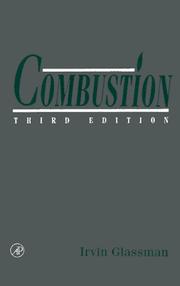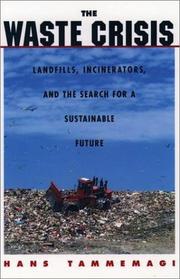| Listing 1 - 4 of 4 |
Sort by
|
Dissertation
ISBN: 9789056829667 Year: 2008 Publisher: Heverlee Katholieke Universiteit Leuven. Faculteit Ingenieurswetenschappen
Abstract | Keywords | Export | Availability | Bookmark
 Loading...
Loading...Choose an application
- Reference Manager
- EndNote
- RefWorks (Direct export to RefWorks)
This dissertation studies the leaching behaviour of Cu from municipal solid waste incinerator (MSWI) bottom ash in view of recycling. As a large quantity of MSWI bottom ash – the most important residue originating in the grate furnace of a MSWI – is produced all over the world, the impact of landfilling or recycling of this residue is large. In Flanders, but also worldwide, Cu leaching from MSWI bottom ash exceeds the limit value for recycling as granular construction material. The speciation of Cu in MSWI bottom ash was studied and revealed the presence of several Cu minerals, of which CuO, metallic Cu and Cu2O were the most important. None of the identified Cu minerals could, however, explain the high Cu leaching from MSWI bottom ash, confirming that organic carbon complexation predominantly controls Cu leaching. Organic carbon isolated from MSWI bottom ash was therefore fractionated into a hydrophilic, fulvic acid and humic acid fraction. A study of the contribution of each organic fraction to the leaching of Cu from MSWI bottom ash showed that 50% of the Cu leaching could be explained by complexation with hydrophilic components, 30% with fulvic acids and only ca. 3% with humic acids. The importance of the hydrophilic fraction was confirmed by modelling results in LeachXS. The different organic fractions were further characterised with respect to chemical and structural properties. Six treatment techniques were investigated for their potential of improving the MSWI bottom ash quality, particularly controlling the leaching of Cu. Three techniques (heating, washing and extraction) allowed to reach the Flemish leaching limit values. The three other techniques (particle size-based separation, natural weathering and accelerated carbonation) resulted in a decrease of Cu leaching, but the limit value for Cu was not reached. The decrease in Cu leaching could be explained by the large decrease of the hydrophilic fraction and to a lesser extent of the fulvic acid fraction. Bij de verbranding van huishoudelijk afval in een roosteroven, ontstaan verschillende residu’s. Bodemas is het voornaamste residu met 80 tot 90% van het totale gewicht van alle residu’s. Aanzienlijke hoeveelheden bodemas worden jaarlijks geproduceerd: ca. 250 000 ton/jaar in Vlaanderen en meer dan 20 miljoen ton/jaar in Europa. Daarenboven zal de wereldwijde productie van bodemas de komende jaren wellicht nog stijgen vanwege de verwachte toename van het aandeel van verbranden in de verwerking van huishoudelijk afval. De recyclage van bodemas als secundaire grondstof (bijvoorbeeld in funderingen bij wegenaanleg of als substituut van zand en grind in betonblokken) kadert in een duurzaam afvalbeleid: minder afval moet gestort worden en natuurlijke grondstoffen worden uitgespaard. Voor recyclage moet bodemas aan een aantal strikte normen voldoen. Bestaande technologieën leveren naast fracties die aan deze normen voldoen, ook fracties die er niet aan voldoen. In Vlaanderen, maar ook wereldwijd, is de uitloging van Cu (d.i. het oplossen van Cu in een waterige fase die in contact wordt gebracht met de bodemas) de voornaamste hinderpaal voor recyclage van deze fracties. Om een beter inzicht te verwerven in reeds gerealiseerde behandelingen van bodemas én de ontwikkeling van nieuwe behandelingen, is de kennis van het uitloogmechanisme van Cu noodzakelijk. In een eerste stap werden de verschillende aanwezige vormen van Cu in bodemas geïdentificeerd. De hoge Cu uitloging uit bodemas kon echter niet verklaard worden door de oplosbaarheid van deze Cu mineralen. Vervolgens werd de complexatie van Cu met verschillende organische fracties – die uit de bodemas werden geïsoleerd – onderzocht. Verschillende experimenten en modelleringsresultaten lieten toe om de bijdrage van elke organische fractie tot de Cu uitloging te bepalen en toonden aan dat voornamelijk de hydrofiele organische fractie en ook het fulvozuur verantwoordelijk bleken te zijn voor de hoge Cu uitloging uit bodemas. Zes behandelingstechnieken werden tenslotte onderzocht met het oog op recyclage. Het effect van alle technieken op de Cu uitloging werd bestudeerd en verklaard. Drie technieken (verhitting, wassen met water en extractie met ammoniumcitraat) lieten toe om de Cu uitloging tot onder de norm te brengen. De andere technieken (scheiding volgens deeltjesgrootte, natuurlijke veroudering en versnelde carbonatatie) veroorzaakten een onvoldoend grote daling in de Cu uitloging.
Book
ISBN: 9282638553 9789282638552 Year: 1992 Volume: 14136 Publisher: Luxembourg: Office for official publications of the European Communities,
Abstract | Keywords | Export | Availability | Bookmark
 Loading...
Loading...Choose an application
- Reference Manager
- EndNote
- RefWorks (Direct export to RefWorks)
628.54 --- 628.545 --- 628.474 --- (4-67EU) --- $?$93/04 --- Factory and trade waste --- Incineration. --- Refuse and refuse disposal. --- Déchets industriels --- Incinération. --- Élimination.

ISBN: 0122858522 9786611311445 1281311448 0080529410 9780080529417 6611311440 9780122858529 Year: 1996 Publisher: San Diego, Calif. : Academic Press,
Abstract | Keywords | Export | Availability | Bookmark
 Loading...
Loading...Choose an application
- Reference Manager
- EndNote
- RefWorks (Direct export to RefWorks)
This Third Edition of Glassman's classic text clearly defines the role of chemistry, physics, and fluid mechanics as applied to the complex topic of combustion. Glassman's insightful introductory text emphasizes underlying physical and chemical principles, and encompasses engine technology, fire safety, materials synthesis, detonation phenomena, hydrocarbon fuel oxidation mechanisms, and environmental considerations. Combustion has been rewritten to integrate the text, figures, and appendixes, detailing available combustion codes, making it not only an excellent introductory text but al
Combustion. --- Combustion --- 536.46 --- 628.474 --- Thermochemistry --- Heat --- Smoke --- Combustion and similar reactions. Flames --- Disposal of refuse by burning, incineration --- 628.474 Disposal of refuse by burning, incineration --- 536.46 Combustion and similar reactions. Flames --- ELSEVIER-B EPUB-LIV-FT --- Thermochemistry. --- Chemistry, Physical and theoretical --- Thermodynamics

ISBN: 0195128982 9780195128987 1429404760 9781429404761 9781601196828 1601196822 9781280530500 1280530502 0195351681 9780195351682 019756142X 0199880913 9786610530502 Year: 1999 Publisher: New York : Oxford University Press,
Abstract | Keywords | Export | Availability | Bookmark
 Loading...
Loading...Choose an application
- Reference Manager
- EndNote
- RefWorks (Direct export to RefWorks)
As populations continue to increase, society produces more and more waste. Yet it is becoming increasingly difficult to build new landfills, and the existing landfills are causing significant environmental damage. Finding solutions is not simple; the problem is enormous in size, vital in terms of its impact on the environment, and complex in scope. This book provides a vast look at solid waste management in North America and seeks solutions to the waste crisis.
Integrated solid waste management --- 504.062 --- 628.396 --- 628.474 --- Integrated waste management --- Refuse and refuse disposal --- 628.474 Disposal of refuse by burning, incineration --- Disposal of refuse by burning, incineration --- 628.396 Disposal of wastes into the soil, geological strata, caverns. Underground disposal. Landfills --- Disposal of wastes into the soil, geological strata, caverns. Underground disposal. Landfills --- 504.062 Protection, rational use, restoration of natural resources. Sustainable development --- Protection, rational use, restoration of natural resources. Sustainable development --- Integrated solid waste management. --- Refuse and refuse disposal. --- Discarded materials --- Disposal of refuse --- Garbage --- Household waste --- Household wastes --- Rubbish --- Solid waste management --- Trash --- Waste disposal --- Waste management --- Wastes, Household --- Sanitation --- Factory and trade waste --- Pollution --- Pollution control industry --- Salvage (Waste, etc.) --- Street cleaning --- Waste products --- Environmental aspects
| Listing 1 - 4 of 4 |
Sort by
|

 Search
Search Feedback
Feedback About
About Help
Help News
News